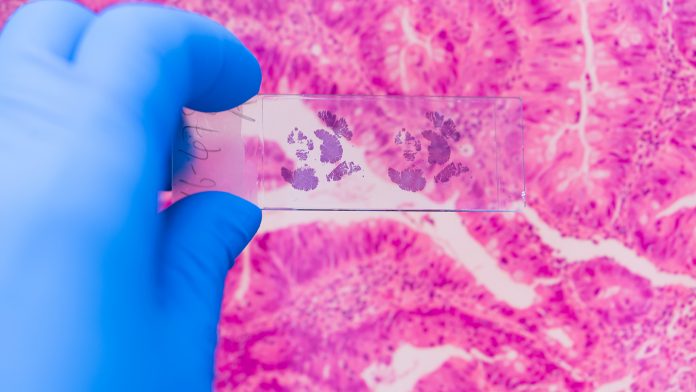
Researchers have found how the mechanical properties of triple-negative breast tumours can influence how their cancerous cells spread to other organs.
According to new findings from the Garvan Institute of Medical Research, softer tumour environments, typical of early-stage cancer, can prime triple-negative breast cancer cells to use an extra energy source for survival during metastasis.
The study in cell and mouse models suggests that drugs targeting this altered cancer cell metabolism could boost treatments for metastatic triple-negative breast cancer.
“Our research suggests triple-negative breast cancer cells in soft tissue environments are ‘primed’ to better survive the spread to other organs and that they switch on an alternative form of metabolism to do so,” said Associate Professor Cox, Head of the Matrix & Metastasis Lab at Garvan and senior author of the study published in Advanced Science.
“This suggests that triple-negative breast cancer cells spreading from softer tumours are more aggressive, and drugs that target cancer cell metabolism may benefit patients with metastatic triple-negative breast cancer treatment.”
New treatment options are needed
Triple-negative breast cancers are highly aggressive. Approximately 2,500 women are diagnosed with these types of cancers every year in Australia alone.
These types of cancers are difficult to treat as they lack three receptors that can be targeted in other breast cancers.
Because of this, more treatment options are needed.
How triple-negative breast cancers respond to their environment
The team used biomaterials that mimic the properties of tumours to explore how triple-negative breast cancer cells respond to the physical stiffness of their environment.
The researchers found that cancer cells were primed to be more resilient when grown in soft environments. When injected into mouse models, the cancer cells were up to 11.8 times more likely to metastasise to new sites compared to those from rigid tumour environments.
Soft environments altered the cancer cells’ preference for ‘fuel’ in a way that enhanced their durability while travelling through the body.
These primed cells metabolised glucose and also stockpiled lipids as internal fuel reserves. This boosts lipid metabolism, a more resilient energy pathway for their journey from a primary tumour site.
“This switch to using both glucose and fats as an energy source equips cells to better survive the mechanical stresses of travelling through the bloodstream and seeding new tumour sites throughout the body,” said first author Dr Elysse Filipe, who completed the study as a postdoctoral researcher at Garvan.
“By blocking lipid metabolism in triple-negative breast cancer cells, we were able to ‘starve’ their high energy demand and reduce metastasis in a cell model.”
A vulnerability of triple-negative breast cancers
“Our findings highlight that the physical properties of triple-negative breast cancers, which vary dynamically as the cancer progresses, profoundly impact the cancer’s ability to spread,” said Dr Filipe.
“These findings reveal a vulnerability of triple-negative breast cancers – the metastasising cells’ reliance on diverse fuel sources to meet their high energy demands.”
Associate Professor Cox concluded: “The study underscores the importance of considering the mechanical diversity within and between tumours when designing new treatments for aggressive cancers.
“We now plan to explore whether pairing targeted metabolic inhibitors with existing therapies could limit metastasis and improve outcomes for triple-negative breast cancer patients.”









